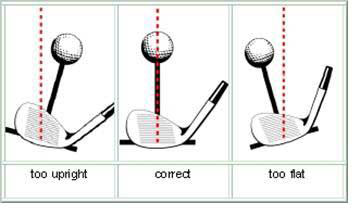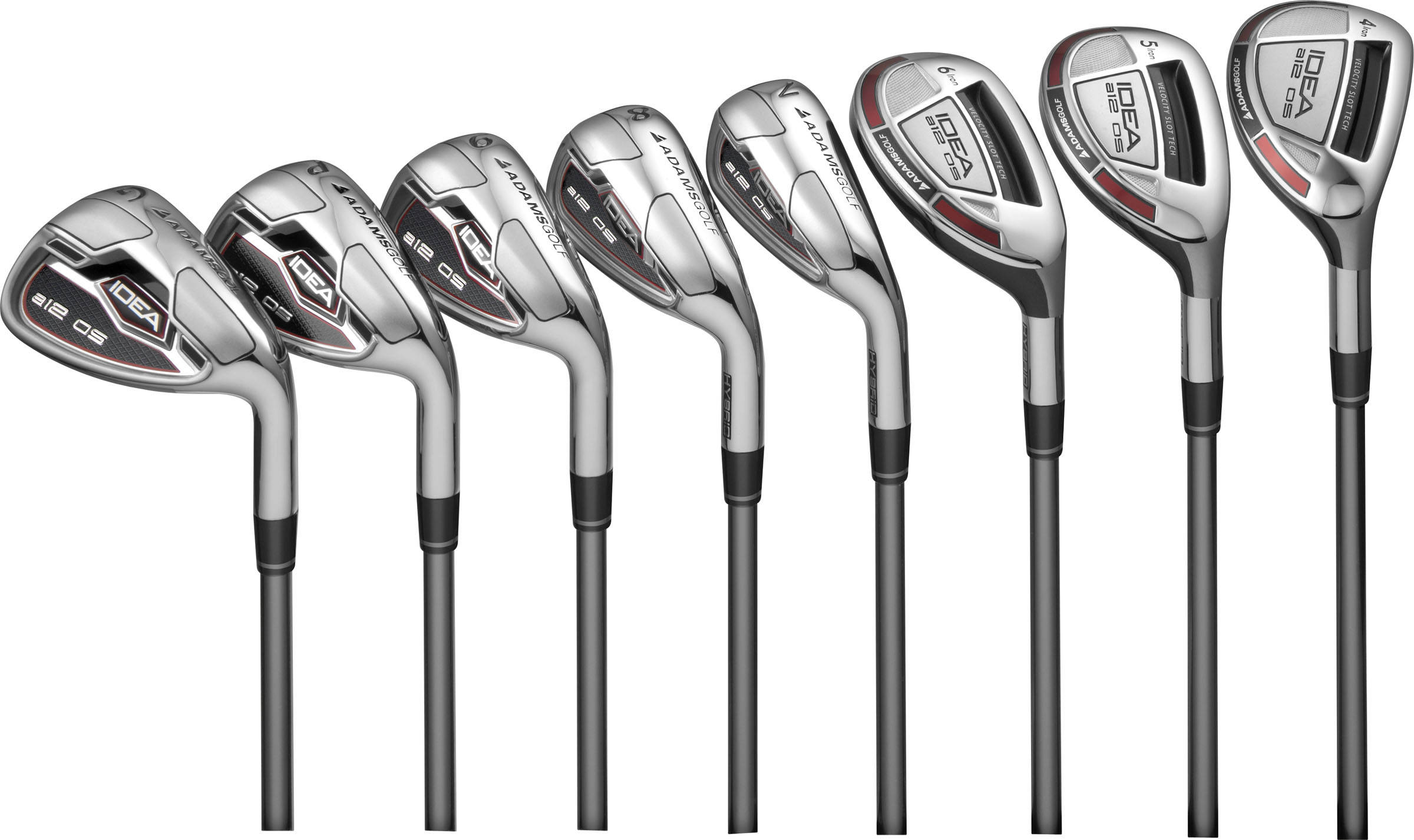Golf Club Loft Guide

If you want to, then you have to be able to execute with a wedge in your hand. In this article I want to explore why choosing the correct wedge loft is a part of that process.
If you can’t get the ball on the green more often than not with a wedge in your hand, then your game is going to struggle. I believe this is the key to avoiding and lowering your handicap. Wedge loft is important in this area of the game because you want more options. I strongly recommend that every golfer should visit a knowledgeable fitter at some point, and make sure that you have the proper gapping with your wedge lofts.
Knowing Your Distances The first step to making the right decision with your wedge loft is knowing how far you hit the ball. Not how far you think you hit it. I will run through an example in my game to give you an idea of how I arrived at the different wedge lofts in my bag. Here are my current distances on full swings with each wedge: Pitching Wedge (45 Degrees): 125 Yards, Gap Wedge (51 Degrees): 115 Yards, Sand Wedge (56 Degrees): 100 Yards, Lob Wedge (60 Degrees): 90 Yards I chose the lofts on these wedges because of the various I hit the ball, but you can see that I have pretty much every yardage covered inside of 130 yards. I strongly believe that most golfers should carry a gap wedge to avoid the large “gap” between their pitching and sand wedge. If you can work with a teaching professional or club fitter using a, then you can arrive at your yardage for each wedge.
The angle of the face of the club with respect to the shaft is called loft.Drivers, 2 and 3 irons have very little loft. Wedges, and short irons have considerable loft by design. And, as your intuition tells you, the more highly lofted a club is, the higher will be the trajectory of your ball. Golf Club Angles and Distances Average Loft Angle and Distances of Clubs Distances are measured in yards based on average amateur male and female players ranging from short, mid, and long hitters.
This will make it easier to decide what lofts you need in order to properly gap yourself. The main key is to choose a collection of lofts that don’t leave any large holes in distance between clubs.
You want to have a wedge for each yardage. There Are No Standards It is important to understand that there are no standards in the golf industry for pitching wedge loft. This could greatly affect how many wedges you carry in your bag, and what loft they should be. The trend has been for lofts to go stronger and stronger, which is increasing the distance each player will hit their pitching wedge. Pitching wedges that used to be 48 degrees are now in the 44-45 region. This is exactly why having a gap wedge has become more important.
For example, a Steelhead XR pitching wedge has 44 degrees of loft. You can typically find lofts on a manufacturer’s website If you had a that was 56 degrees of loft, that would leave an enormous gap in yardage between the two clubs. Having something in between the two, maybe at around 50 degrees would be more appropriate. Most players are going to execute better with a full swing rather than try to hit a pitching wedge at 80% of its normal yardage. Each manufacturer has their own lofts, and it is important to know what you are playing with so that you can make the right decision. Three or Four Wedges?
I believe you should have three wedges in your bag (including your PW), at minimum. Let’s say your pitching wedge loft is 46 degrees. You could possibly get away with having a gap wedge at 51 degrees, and then a sand wedge at 56 degrees. Usually, wedges can be bent a degree stronger or weaker to accommodate your preferences as well. I carry four wedges because I want more options around the green.
Adding a lob wedge is a great idea for many golfers because it allows you to get the ball in the air quickly without having to manipulate the clubface. The majority of golfers who play this game are missing more than 70-75% of during a round.
That means on most holes they are going to have a wedge in their hand inside of 100-125 yards. In my opinion, if you carry more wedges in your bag it gives you a larger arsenal of distances and trajectories you can play. Each player’s game is unique though, and it is best to analyze the kinds of situations you usually find yourself in during a round.
Perhaps it might make more sense to carry four wedges based on the kinds of shots you like to play. Final Thoughts on Wedge Loft I believe that in order to choose the right mix of wedge loft you should clear up two things. You should know the loft of your pitching wedge, and also figure out how far you actually hit different lofts on full swings. Your main goal is to avoid any major gaps between your wedge loft and make sure you can accommodate the different kinds of you are faced with on the course.
If you can get the optimal mix for your game you will have a better chance at success. I strongly recommend seeing a knowledgeable club fitter in your area to make sure you get everything right.
Golf Club Loft Angle Guide
Lie Angle If you’re tall or short, and/or have an unusually shallow or steep swing, you may want to think about visiting your local club professional who can check whether the lie angle of your irons is appropriate. At the point of impact, if the head of the is too flat (i.e. The toe points down) it can drag on the grass, acts for an instant as a pivot, and causes the plane of the face to tile towards the right – which is where the ball will go.
If the lie is too upright, the heel of the club will dig in and cause pulled shots to the left. As a rule, shorter golfers will generally benefit from slightly flatter lies; taller golfers may need them tweaked upright a little. Most manufacturers do offer in a variety of different lies – but generally only as a special order. So how do you tell whether the lie is correct on your clubs? The technology for testing this is very simple. Your local pro should be able to help, and what they’ll do is put some masking or impact tape on the sole of the club – and gets you to hit some balls off a lie testing board (essentially a black strip of hard plastic).
This leaves a mark or hole in the tape when you hit a ball off it. If everything is hunky dory, the tape will be marked where the centre of the sole is and the clubs are fine. If it’s marking towards the toe, lie angle is too flat, and towards the heel, too upright. It’s worth noting that because an incorrect lie angle causes the plane (and therefore, loft) of the club to become tilted, getting the lie angle correct is much more important on short than long irons.
Once you’ve established whether or not the lie angles need tweaking, most clubs can be usually altered in a matter of minutes by your local pro for a modest fee, well worth paying. Lofts Similarly, it is also worth having the lofts of your clubs checked, say, once a year.

Hybrid Golf Club Loft Guide
If you’re playing a lot of golf with forged clubs – which are made of softer metal – it might even be worth having them checked more regularly. Club heads are just bits of metal – and hitting them regularly on the ground (as you do withevery shot) will over time inevitably bend them out of whack to some extent.Even brand new clubs straight from the factory have a tolerance which might beplus or minus 2 degrees. So why is it important to check them? Club heads are just bits of metal – and hitting them regularly on the ground (as you do with every shot) will over time inevitably bend them out of whack to some extent. Even brand new clubs straight from the factory have a tolerance which might be plus or minus 2 degrees. So why is it important to check them?
With thanks to Ping Golf, here is the specification table for their G5 irons. You’ll see that there is 3 to 4 degrees of loft (equating to roughly 10-15 yards distance) between each club. So, the loft on the 3 iron is 21 degrees, and on the 4 iron 24degrees etc.
If, for example, on your own set your 7 iron loft was, let’s say, a couple of degrees week (ie more lofted) and your eight iron a couple of degrees strong (ie less lofted) it could mean that both clubs have exactly the same loft – and you could be hitting both clubs the same distance! This scenario is not as unusual as you might think – so, go on, get your lofts and lies checked, give your local club pro some well-deserved business, and do your golf game a favour at the same time. We hope this short guide has proved helpful. If you need any further information – or, indeed, if you think we can improve our explanation of loft and lie – feel free to phone one of our PGA Professionals on 0208 401 6901 – or email They are here Monday-Friday between 9:00 and 18:00 to help and offer advice should you require it.